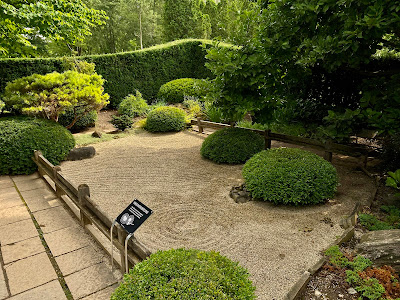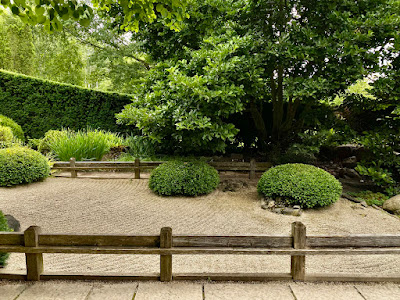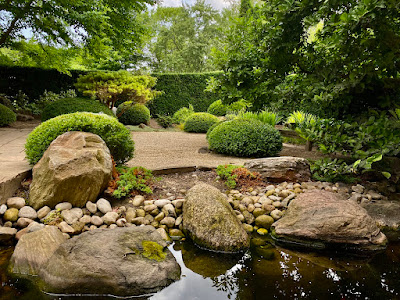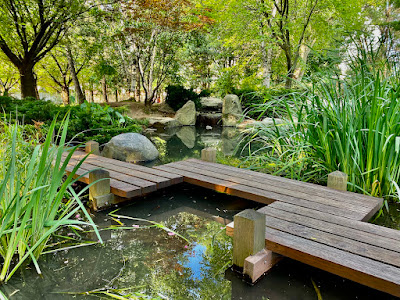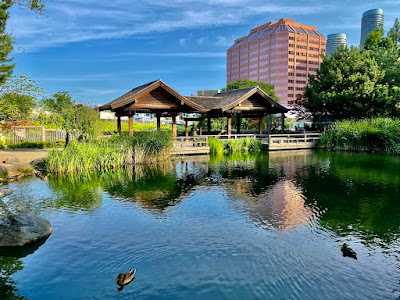Special Note: the Itabashi Garden officially marks the 100 Japanese/Chinese garden that I have visited in North America!
Located behind the Tansley Woods Community Centre & library, in Burlington, Ontario, resides the Itabashi Garden. The garden officially opened on Canada Day, 2019 with delegates from both the city of Burlington and Itabashi, Japan, two sister cities that have been engaged in a twin-city relationship since 1989.
Designed by landscape architect Virginia Burt, the garden consists of large granite rocks from the nearby Niagara escarpment and a mix of Japanese and native trees and plants. As a result, the garden reflects the twinning relationship between Burlington and Itabashi.
The garden is located behind the Community Center but can be accessed easily. When passing through the Center's lobby, one approaches a large curved glass wall with doors that lead to a pleasant patio and sitting area. The garden is the backdrop for this tranquil location.
Not only is it picturesque, its dimensions include an elevation that is accentuated by a Azumaya structure near the top and a very large nearby stone pagoda.
A pathway on either side leads up and through the garden, bringing visitors to the opposite side of the garden. Along the way there are granite steps and a variety of Japanese and native plantings, including 23 different maple trees and forest grass.
The Azumaya (four sided pavilion) at the top is a wonderful perch from which to take in an elevated view of the garden and the entire Community Center courtyard.
Being able to view the courtyard from within the garden is an excellent way to to expand the garden viewing experience. The pathway creates the illusion of a march larger garden by allowing visitors to immerse themselves in the garden. This approach is an improvement over simply viewing the garden statically from the courtyard below. It also affords one the opportunity to view and discover the plantings in a more up-close and personal way.
Regardless of the direction chosen, the pathway offers visual experiences that are sure delight during every season.
Readers should note that there is a nearby walking bridge, the Itabashi Bridge, that crosses a small creek. This author, unfortunately, did not discover its existence until I had already departed the garden.

















